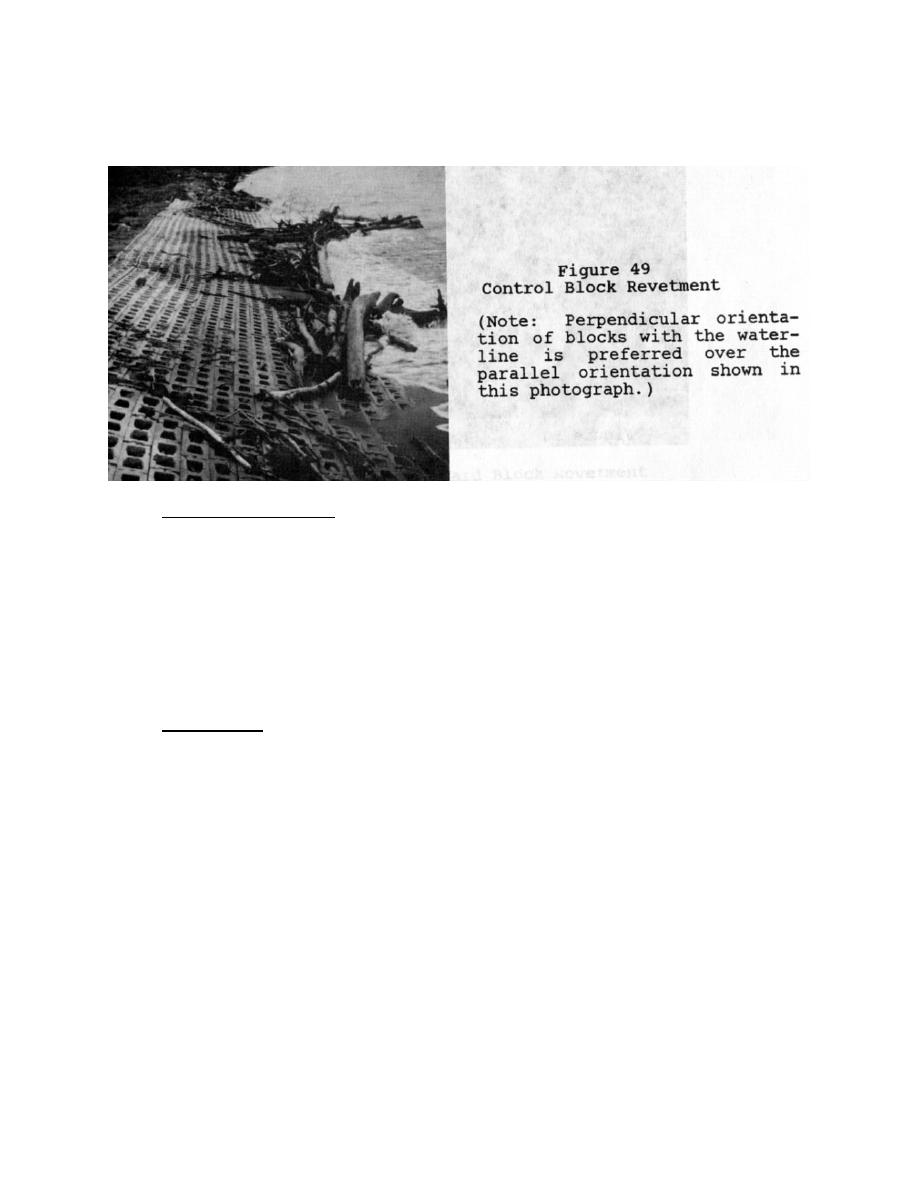
to be hand-placed on a filter cloth with. The cells vertical, the blocks can be aligned with their long axes
parallel to shore, but optimum performance probably results from placement perpendicular to the water's
edge (Figure 49).
Concrete Masonry Blocks
Wave Height Range: Above five feet.
Standard construction masonry blocks should be hand-placed on a filter cloth with their long axes
perpendicular to the shoreline and the hollows vertical. Their general availability is a primary advantage,
but they are highly susceptible to theft. They form a deep, tightly fitting section which is stable provided
the toe and flanks are adequately protected. Their primary disadvantage is that standard concrete for
building construction is not sufficiently durable to provide more than a few years service in a marine
environment. Special concrete mixes should be used when possible.
Shiplap Blocks
Wave Height Range: Below five feet.
Shiplap blocks are formed by joining standard concrete patio blocks with an epoxy adhesive. At
100 pounds or more per unit, they are designed for hand placement on a filter. The same precautions
about concrete mixes apply here. These blocks are discussed in Hall and Jachowski (1964). A
photograph and cross-section of one revetment are shown on Figures 50 and 51.
84



 Previous Page
Previous Page
